History of Institute
- Home
- History of Institute
Activities of the Institute of the Chemistry of Plant Substances named after academician S.Yu.Yunusov of the Academy of Sciences of the Republic of Uzbekistan in the period 2017-2021 within the framework of the Action Strategy in five priority areas.
Establishment Year: 1956.
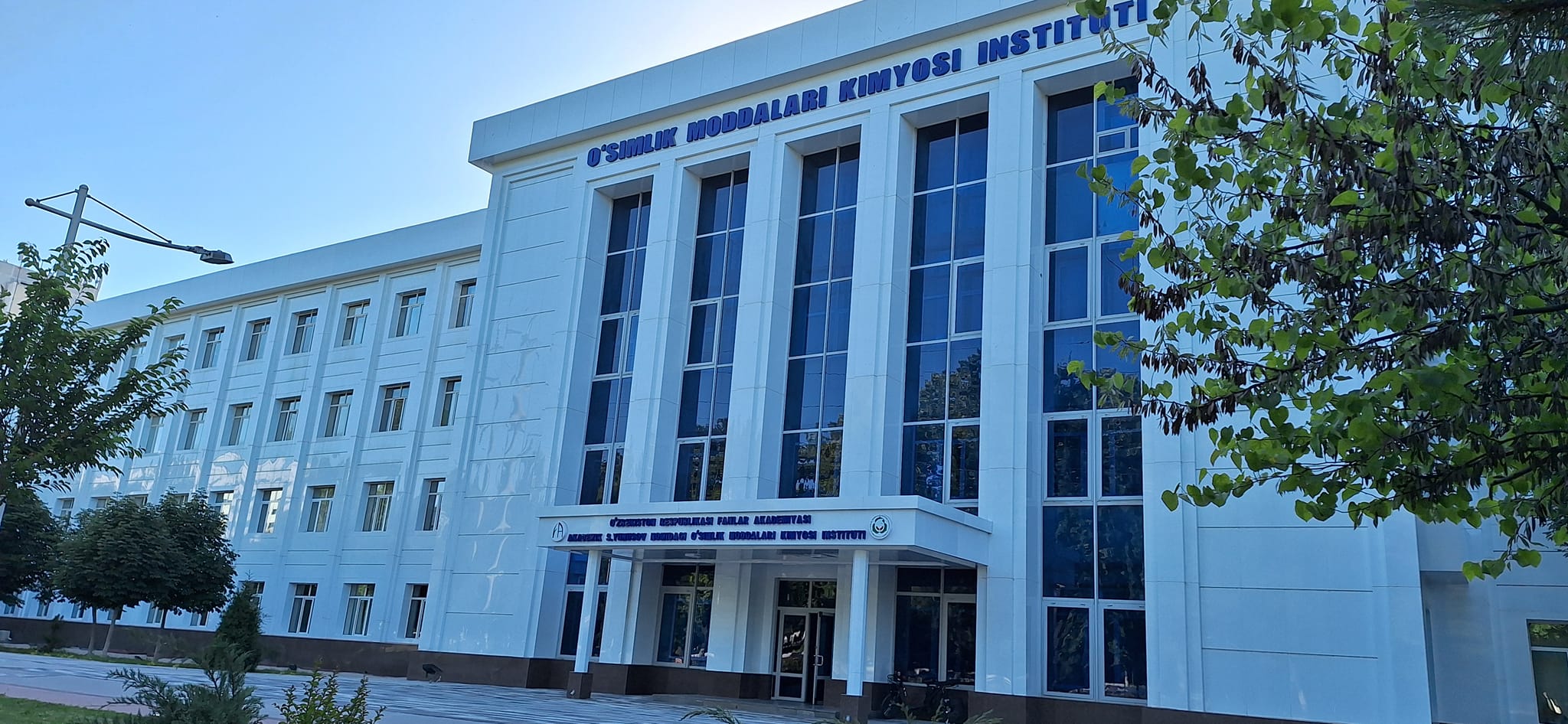
Address: 77, Mirzo Uludbek Str., Tashkent, 100170,Uzbekistan; Tel.:+(998-72)-262-59-13; Fax: +(998-72)-262-73-48
e-mail: plant_inst@icps.org.uz; ixrv@mail.ru. web: http://uzicps.uz/
Director: Dr. Sci. (Academic), Professor Shamansur Sh. Sagdullaev
Staff: Drs. Sci. – 25; Ph. Drs. – 66; Post-graduates – 26; Scientific workers – 162, Total staff – 344. Average age of employees – 45,7
The Main Research Directions:
- Chemical, pharmacological, toxicological biological research of natural and synthetic substances with the purpose of revealing/synthesis of biologically active compounds;
- Creation of plant protection means – plant growth regulators, herbicides, fungicides, defoliants, etc.;
- Manufacture of drug substances and plant protection means developed in the Institute in pilot and industrial scales on the Pilot manufacture department of the Institute;
– Obtaining of recombinant proteins in different expression systems. Development of test-systems for medicine and agriculture.
Well-known Scientific Schools of the Institute:
- Chemistry of natural substances founded by AS RUz academician and SA USSR corresponding member S.Yu.Yunusov, developing by his followers and apprentices (SA RUz corresponding member N.K.Abubakirov, RAS academician M.S.Yunusov and others);
- Technology of natural and synthetic preparations founded by academician Kh.N. Aripov now developing by his followers and apprentices.
Unique Scientific Objects and Manufactures:
The Pilot manufacturing department consisting of three modules for introduction of new high technologies in manufacture of the new medical products substances on the basis of local plant raw material, as well as agricultural means.
Scientific-technological Center for manufacture of substances of drug preparations in accordance with GMP rules.
Scientific Equipment:
- The Spectrometer of nuclear magnetic resonance JEOL JNM- ECA 600 (Japan);
- The Spectrometer of nuclear magnetic resonance UNITY-400 plus Varian (USA);
- Fourier IR-spectrometer Model 2000 Perkin-Elmer (Sweden);
- Difractometer Stoe Stadi-4 (Germany);
- Chromato-mass-spectrometer Agilent Technologies 5975 c Inert MSD/7890F GC System;
- Ultra- and microfiltration equipment (Germany);
- Dispersion dryer Anhydro No.2 (Denmark);
- Poly-functional glass technological equipment (Simax, Czech Republic).
The Main Results of the Fundamental Investigations:
Complex fundamental scientific researches are carried out in Institute in the field of chemistry, biology and technology of plant and synthetic biologically active substances, and
also in the field of molecular genetics and biotechnology. More 1300 alkaloids, 360 glycosides, 520 coumarines, flavonoids, proantocyanidines, 1000 isoprenoids, 50 lipids and 30 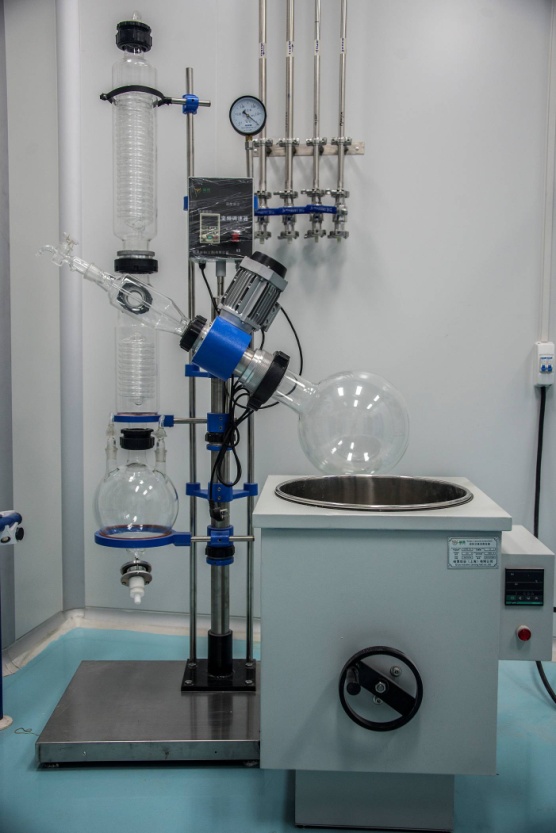 polysaccharides have been isolated isolated. Molecular structures of 630 new alkaloids, 150 new glycosides, 300 new coumarines, flavonoids, lactones, proantocyanidines, and 430 new isoprenoids have been established. 7000 new substances of different types and classes have been synthesized.
polysaccharides have been isolated isolated. Molecular structures of 630 new alkaloids, 150 new glycosides, 300 new coumarines, flavonoids, lactones, proantocyanidines, and 430 new isoprenoids have been established. 7000 new substances of different types and classes have been synthesized.
Pharmacological activity of 2000 natural and synthetic substances has been investigated; 60 substances passed through preclinical pharmacological and toxicological and clinical trials. Structure-activity relationships have been established for diterpene, indole and tropane alkaloids. 35 therapeutically active substances were admitted to use in clinical practice. 16 preparations for medicine and agriculture, as well as biologically active additives manufactured on the Pilot manufacture and sold in Uzbekistan and abroad.
Last three years:
- The structure of 206 natural and synthetic compounds was established, among them 17 new alkaloids, 36 new glycosides, 19 new terpenoids, 32 new polysaccharides were identified, more than 3000 new substances were synthesized. Among the obtained substances the promising compounds with analgesic, antispasmodic, neuroprotective, antidote to neurotoxins, anti-alcohol, anti-cancer, antioxidant, antimicrobial, antifungal, prebiotic and other activities were found. The principles of constructing new compounds with targeted high biological activity and fundamentally new mechanisms of molecular action have been developed using a number of alkaloids as examples.
- For the first time the reactions of electrophilic reagents with tricyclic derivatives of quinazolines were investigated; the possibility of creating an optically active center in these derivatives using chiral catalysts showed. A new oxidative cyclocondensation reaction of 2-thioxo-, -selenoxopyrimidinones, their annellated analogues with benzene and thiophene rings, leading to symmetric and asymmetric condensed 1,2,4-thiadiazoles, as well as ipso-substitution of the methyl group of 5,6-dimethylthieno [2,3-d] pyrimidin-4-ones under the influence of nitrating agents.
- 5 monographs, 408 abstracts, more than 200 articles in scientific journals, 78 of which abroad have been published, and 44 patents for the invention have been obtained.
In 2019, the Institute was awarded a Diploma of World Intellectual Property Organization in the nomination “The Best Institution in the Field of Intellectual Property”.
Practical and Innovation Developments:
Nowadays, the following medicinal and agricultural preparations are produced on the Pilot manufacturing department:
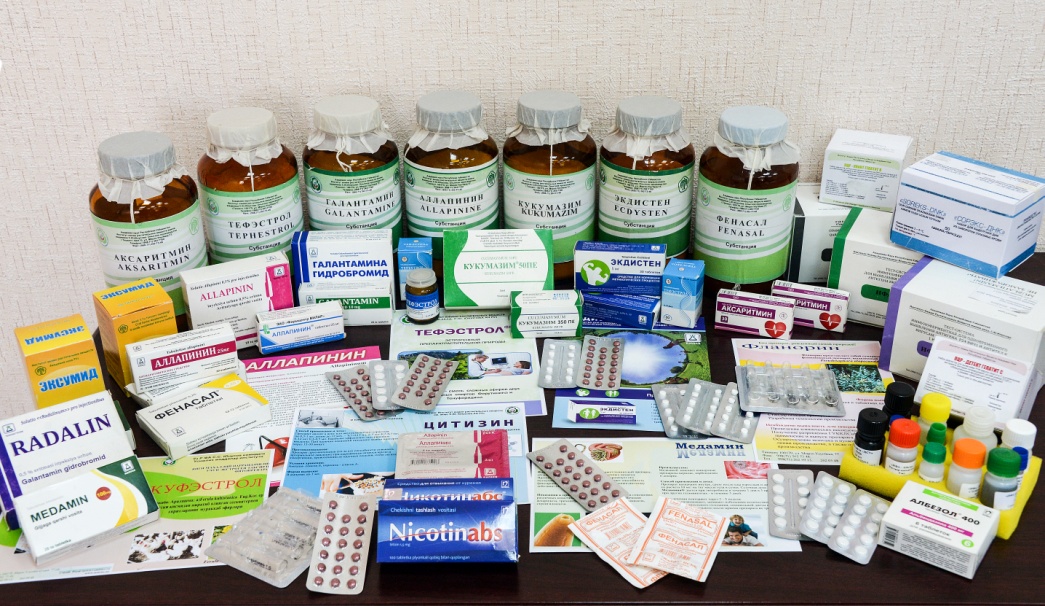
Allapinin – antiarrhythmic preparation isolated from the grass of Aconitum leucostomum and A. septentrionale. The preparation is effective in auricular and ventricular infringements of heart rhythm. It registered in Uzbekistan and Russia. In 2007 the State Prize of the Republic of Uzbekistan in science and technology granted for the institute scientists for elaboration and creation new domestic medicinal anti-arrhythmic preparation “Allapinin”, its introduction into clinical practice and organization of batch production;
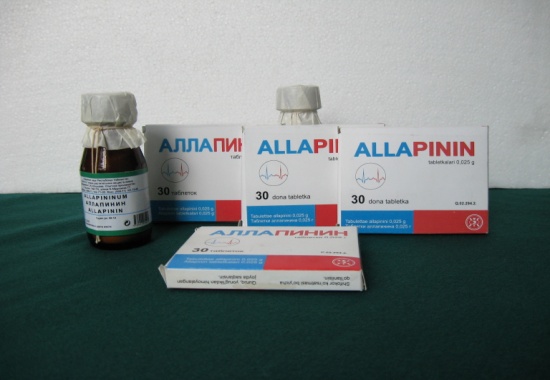
Axarithmin – the preparation obtained from A. septentrionale is applied at supra-ventricular and ventricular extrasistolia, blinking and trembling paroxism of auricles, paroxysmal supra-ventricular and ventricular tachycardias, and also arrhythmias on a background of a heart attack;
Antiarithmin obtained from roots of A. leucostomum and A. septentrionale. At intravenous also intramuscular introduction it is less toxic, than applied in medical practice Allapinin, thus does not concede to the last in anti-arrhythmic activity. It is preferable for emergency treatment in arrhythmias in urgent situations;
Galantamine hydrobromide – anti-cholinesterase preparation isolated from leaves of Ungernia Victoris. The preparation is recommended to patients with defeats of peripheral nervous system, for treatment of consequences of brain blood circulation infringement, at myasthenia and myopathy –form syndromes. Registered in Russia;
Ecdisten – the preparation of toning action isolated from Leuzea cartamoides roots. The preparation is applied at neurasthenia, hypotonia, undue fatiguability, and also appoint as tonic means at an excessive intellectual and physical pressure. Registered in Russia;
Exumide – biologically active additive for sportsmen;
Tefestrol – the preparation an estrogen-like action isolated from Ferula tenuisecta. The preparation is applied in treatment of pregnant women at all terms of pregnancy, in children's gynecology, barreness, menopause;
Oligvon – anti-atherosclerotic and hypolipidemic preparation isolated from aerial part of Artemisia leucodes. The preparation is recommended for treatment of atherosclerotic and diabetic angiopathy, an atherosclerosis of brain vessels, ischemia;
Cucumazim – enzymatic preparation with proteolytic activity isolated from latex of Carica papaya. The preparation is applied in orthopedy, traumatology, surgery, gynecology, stomatology and ophthalmology;
Medamin, Albendazol, Fenasal – synthetic anti-helmintic preparations of a wide spectrum. Medamin is applied at ascaridosis, trichocephalesis, enterobiosis, strongiloidosis, ankilostomidosis. Albendazol is applied at ascaridosis, trichocephalesis, enterobiosis, ankilostomidosis, echinococcosis and cysticercosis. Fenasal is applied at teniarhynhosis, diphyllobotriosis, theniosis and hymenolepidosis, and also at cestosis;
Medapek – anti-helmintic preparation consisting of the mix of Medamin and pectin. The preparation is applied at treatment of echinococcosis;
Cytizine - analeptic preparation isolated from Thermopsis. The preparation is used in reflex respiratory standstill at operations and traumas, and poisonings. It replaces import preparation Lobelinum;
Flanorin – hepatoprotective preparation obtained from Pseudosophora alopecuroides. It is intended for application at various acute and chronic liver diseases, a cirrhosis, inflammatory diseases of biliar system;
Cynarozide – hypoazotemic preparation isolated from Ferula varia. It surpasses known preparation Lespenephril in low toxicity and hypoazotemic activity;
Flateron – anti-aterosclerotic preparation obtained from Thermopsis. It is intended for preventive maintenance and treatment of hyperlipidemia and atherosclerosis;
Ferulen – preparation for prevention and treatments of prostatitis and prostate adenoma obtained from Ferula tenuisecta. On pharmacological activity it surpasses Prostamol, Sinestrol and other imported preparations;
Gledol – bioreactant for immune-competent blood cells separation received from Gleditsia triacanthos seeds. It is intended for definition of membranes marker characteristics and lymphocytes functional activity, as well as at studying of histocompatibility anti-genes, the immune status of patients, sensitivity to drugs and an estimation of various therapy methods efficiency;
Dorilin – plant growth regulator and fungicide for treatment of cotton seeds against root rot;
Navruz – plant growth regulator and fungicide. It is intended for application on cotton and a winter wheat;
Uchkun - the growth regulator of plants obtained from wastes - leaves of cotton after defoliation. The preparation is intended for application on cotton, corn, wheat, tomatoes.
Roslin – the plant growth regulator obtained from wastes of hydrolytic lignin production at local factories and “Nitron” fibre from JSC «Navoiazot». The preparation is applied to pretreatment of cotton, wheat and vegetables seeds before sowing. On biological and economic parameters Roslin is capable to replace imported preparation Vitawax and other similar means.
Panorut , Kufestrol – phytopreparations for increasing of eggs production. These preparations accelerates pubescence of chicken that leads to earlier starting of oviposition and increasing of egg-laying qualities.
ELISA kits for detection of HIV, syphilis, hepatitis B and C.
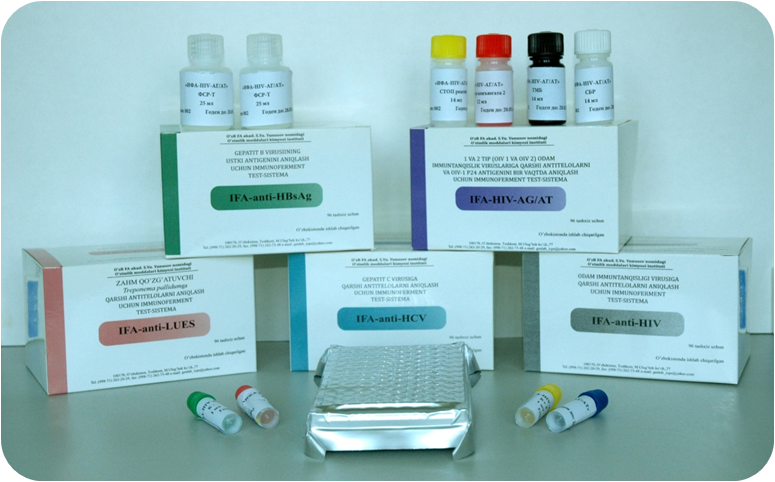
Putting the results into practice
On March 18, 2019, the Scientific and Technological Center for the production of pharmaceutical substances according to GMP requirements has been opened at the Institute has been opened at the Institute. Over 30 billion soums were spent on the construction and equipment of the Center from extra-budgetary funds of the Institute and loans from commercial banks. The Institute’s modernized pilot production is the only GMP enterprise in the Central Asia that produces, at the first stage, 20 medicinal substances of original import-substituting and exporting drugs for the treatment of diseases widespread in the republic. When the modernized manufacture will reach its full capacity, it will process more than 500 tons of plant raw material annually, produce 50 substances of original import-substituting and export-oriented drugs and dry plant extracts, and technologies for deep processing of plant materials will be introduced.
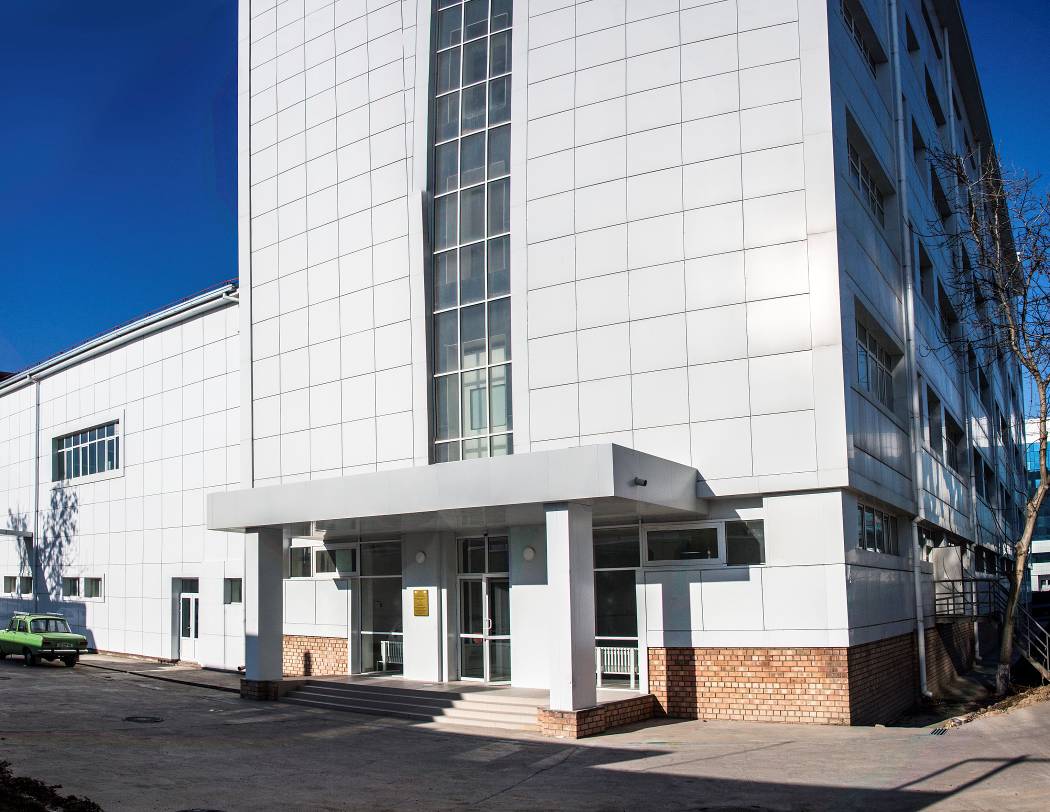
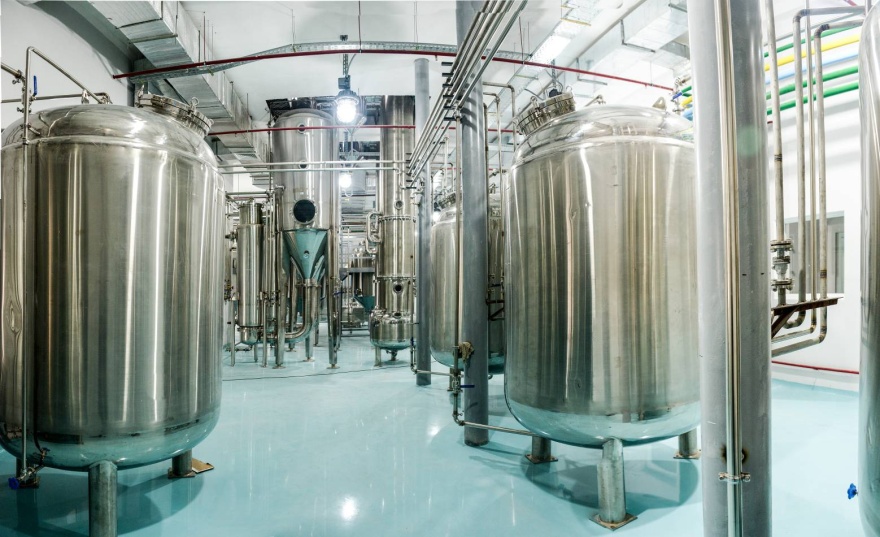
Export. Nowadays, a number of preparations and biologically active additives are exported to foreign countries:
France: Bioadditive “Jistenin” is exported to “Christian Dior” and “Gerlen” companies for manufacture of more 10 kinds of cosmetic products; Panorut phytopreparation 120 bioreagents for fundamental and applied investigations – to “Latoxan” company;
Russian Federation: Allapinin drug substance – to CJSC “Pharmcenter VILAR”, drug substances of galantamine and ecdisten – CJSC “VIFITEX”.
License agreements. License agreement for Allapinin drug substance delivery signed with to CJSC “Pharmcenter VILAR” (Russia). Trade mark “Allapinin” is registered in Uzbekistan and Russia. License agreement for Allapinin drug substance delivery is signed with SMP “Radix” (RUz).
Journal “Chemistry of Natural Compounds”. International Journal “Chemistry of Natural Compounds” issued in the Institute since 1965 and translated in English by Springer Science+Business Media, Inc. Editors. The journal is publishing manuscripts of authors from 40-45 countries over the world. Impact factor is 0.8 and 1.4 Scopus (2024).
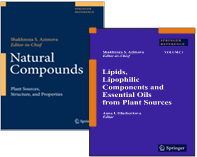
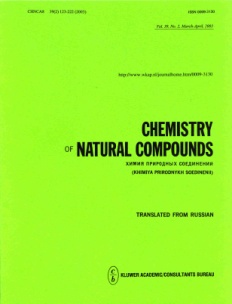
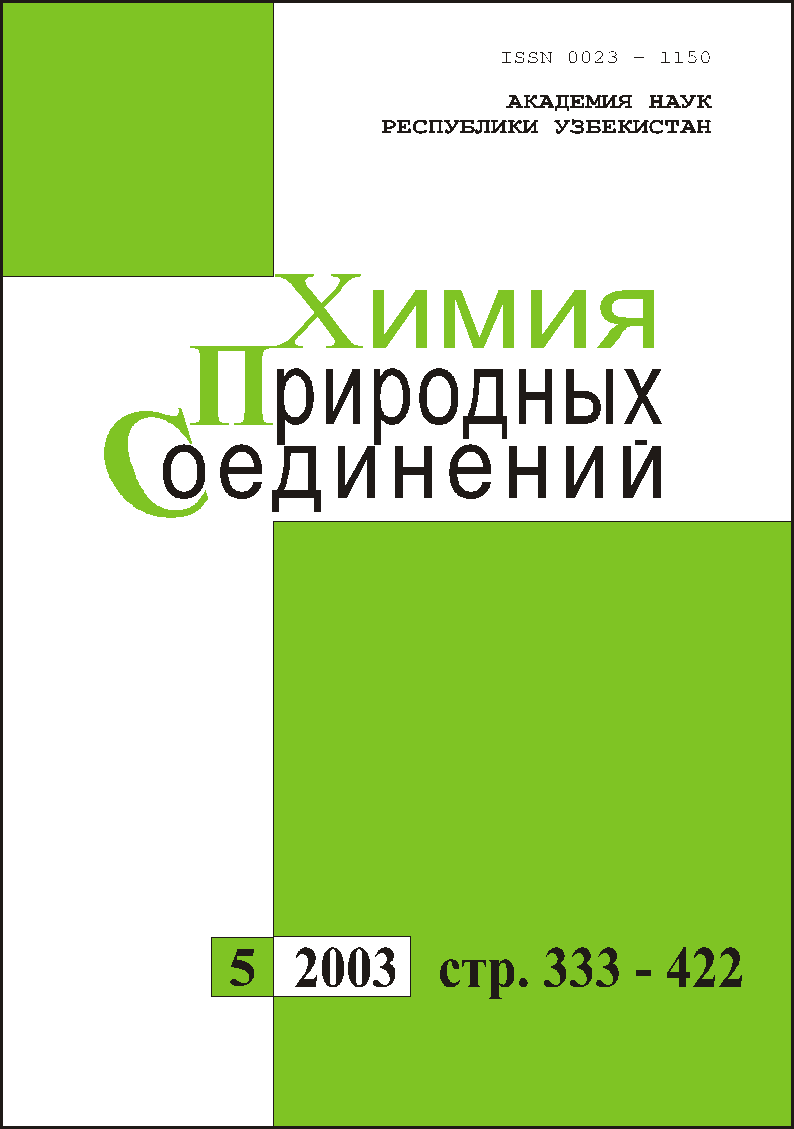
The prospects of the Further Development
Until 2025, the Institute is planning to introduce the following modern research directions:
Rational, targeted creation of chemical compounds with a desirable type of biological activity, in particular medicines (medical chemistry, drug design). Nowadays, the Institute is developing biologically active drugs based on the study of plant composition, structure and biological activity of chemical compounds. To date, both in world practice and in the Institute’s arsenal, a considerable information has been accumulated on the structure and biological activity of substances of various chemical classes. The Institute also actively continues to develop these studies, which allows us to begin the reverse task of carrying out work in the field of constructing molecules with the desired type biological activity based on the revealed structure-activity relationship.
Semi-synthesis (modification) of plant metabolites. It must be noted that native compounds are used less and less in the production of drugs. As a result of the development of a special area of medical chemistry, the main principle of which is the study of synthetic transformations of natural metabolites (the so-called “semisynthesis”), the most effective drugs in oncology, cardiology, and the treatment of HIV infection and were obtained from plant metabolites by semisynthesis.
Metabolomics, a technology that includes a set of analytical and bioinformation methods for the quantitative determination and identification of low molecular weight metabolites (metabolome) present in a cell, tissue or body. This will greatly accelerate the process of phytochemical study of medicinal plants without resorting to the isolation and purification of individual compounds.
Biotechnology of medicinal plants - obtaining biologically active substances in plant cell cultures.
Since 2021, study about 50 postdoc students (02.00.03-organic chemistry (chemical and technological sciences), 02.00.10-bioorganic chemistry (chemical and technological sciences), 14.00.25-pharmacology) is planning. Also, 50-60 research interns per year will be attracted at the institute. Thus, over 5 years, 50 Doctors of Philosophy and 10 Doctors of Sciences will be prepared and graduated. A series of training seminars will be organized at the Institute for young scientists in modern areas of organic, bioorganic, medical chemistry and drug design, which will be conducted by leading specialists of the Institute and invited lecturers.
In accordance with Decree of the President of the Republic of Uzbekistan No. 5047, the Institute is working under the organization of a Laboratory of medicinal chemistry and of a Center for Preclinical Studies of BAS in accordance with GLP requirements.
© 2024 ICPS AS Ruz. All rights reserved.
